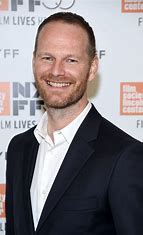Introduction
Agnes Varda was a French filmmaker, photographer, and artist who made a significant contribution to the world of cinema. Her unique storytelling style and innovative approach to filmmaking have made her one of the most influential filmmakers of her time. This blog post will explore the films of Agnes Varda and take you on a journey through her remarkable career.
Early Life and Career

Agnes Varda’s Childhood and Education
Agnes Varda was born in Belgium in 1928 and grew up in France. She studied literature and psychology at the Sorbonne in Paris and later worked as a photographer for the Theatre National Populaire. Her early experiences in photography would later influence her filmmaking style.
Agnes Varda’s Early Films
Varda’s early films were heavily influenced by the French New Wave movement, which was characterized by a rejection of traditional filmmaking techniques and a focus on realism and personal expression. Her first feature film, “La Pointe Courte,” was released in 1955 and is widely regarded as a precursor to the French New Wave. The film tells the story of a young couple struggling with their relationship while living in a fishing village.
Notable Films
“Le Bonheur”
“Le Bonheur” is a 1965 film that explores the complex nature of love and happiness. The film tells the story of a man named Francois who is happily married but falls in love with another woman. The film’s use of bright colors and playful music contrasts with the dark subject matter, creating a sense of unease for the viewer.
“Vagabond”
“Vagabond” is a 1985 film that tells the story of a young woman named Mona who is found dead in a ditch. The film uses a non-linear narrative structure to explore Mona’s life and the events that led to her death. The film is a powerful commentary on the struggles of marginalized people in society.
Legacy and Impact
Agnes Varda’s Influence on Filmmaking
Agnes Varda’s unique storytelling style and innovative approach to filmmaking have inspired countless filmmakers around the world. Her films continue to be studied and celebrated for their groundbreaking techniques and powerful storytelling.
The Criterion Collection and Agnes Varda
The Criterion Collection, a prestigious film distribution company, has released several of Agnes Varda’s films on DVD and Blu-ray. This has helped to introduce her work to a new generation of film enthusiasts and has cemented her status as one of the most important filmmakers of the 20th century.
Conclusion
Agnes Varda was a true visionary who pushed the boundaries of filmmaking and inspired countless artists around the world. Her films continue to captivate audiences and her legacy will undoubtedly continue to influence the world of cinema for generations to come.
FAQ
Who is Agnes Varda?
Agnes Varda was a French film director, screenwriter, and photographer. She was a pioneer of the French New Wave movement and is considered one of the most important filmmakers of the 20th century.
What is the French New Wave movement?
The French New Wave was a film movement that emerged in the late 1950s and early 1960s. It was characterized by its rejection of traditional filmmaking techniques and its emphasis on personal expression and experimentation.
What are some of Agnes Varda’s most famous films?
Agnes Varda directed many acclaimed films over the course of her career, including “Cleo from 5 to 7,” “Vagabond,” “The Gleaners and I,” and “Faces Places.”
What themes does Agnes Varda explore in her films?
Agnes Varda’s films often explore themes of memory, identity, and social justice. She was known for her compassionate and empathetic approach to storytelling, as well as her innovative use of documentary techniques.
Why is it important to discover Agnes Varda’s films?
Agnes Varda was a groundbreaking filmmaker who paved the way for future generations of female filmmakers. Her films are not only important from a historical perspective, but they also offer unique and insightful perspectives on the world around us. By discovering her films, we can gain a deeper understanding of the art of cinema and the human experience.



